Read the full story for an update!
Meet Circe and Muon! They are two specially-trained dogs used in ecological research who are helping Desert Botanical Garden, U.S. Fish and Wildlife and the Smithsonian find rare and endangered orchids growing in southern Arizona.
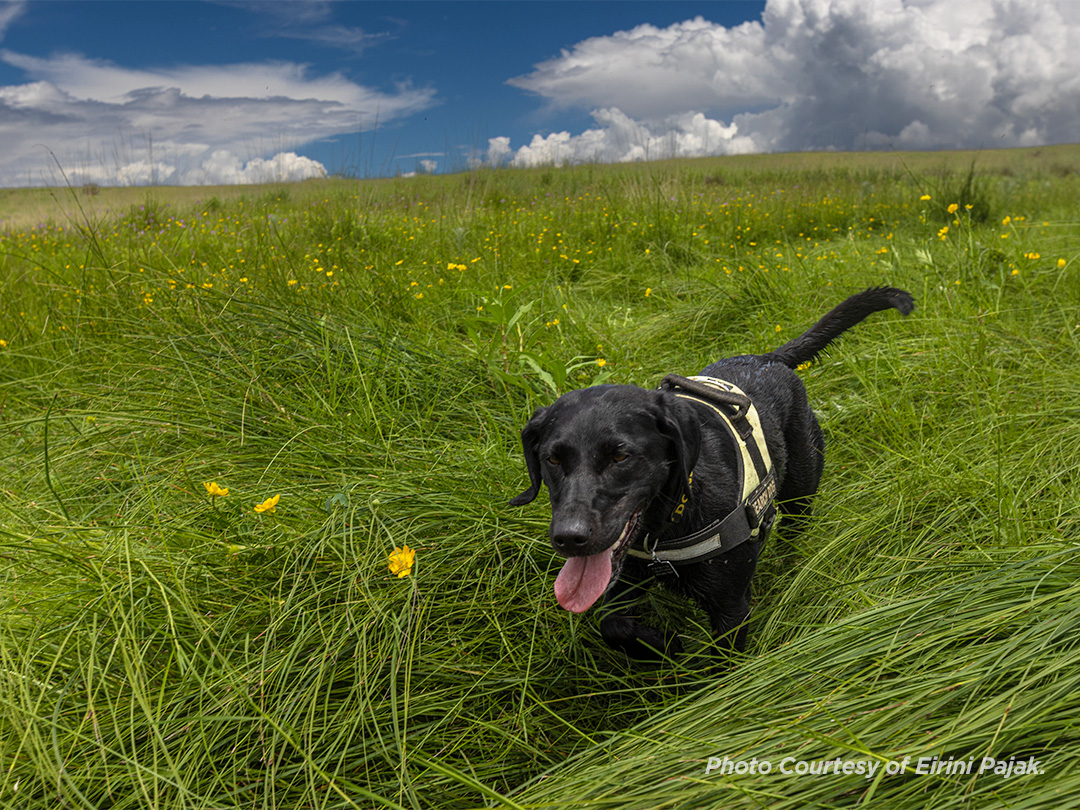
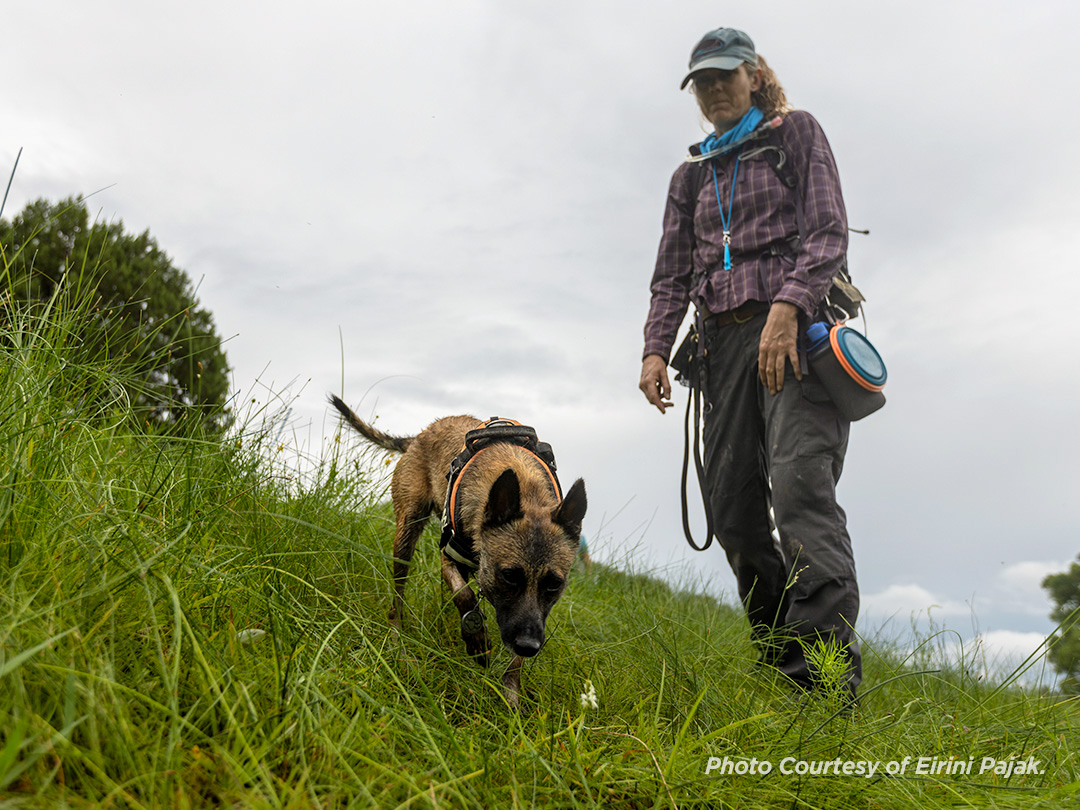
The research canines are on the hunt for the Canelo Hills ladies’-tresses orchid (Spiranthes delitescens), an endangered plant first described as a new species in 1990 and listed as endangered by 1997. The orchid grows in cienegas, a rare desert wetland native to the Southwest. Historically, it was known to grow in five localities in Arizona, but it has been in severe decline and has only been seen at two of these previously known sites since 2016.
It is nearly impossible for humans to look for these small cryptic plants due to their short flowering period and the dense vegetation in which they grow. However, dogs’ sense of smell makes them great at detecting them even when the orchids aren’t blooming
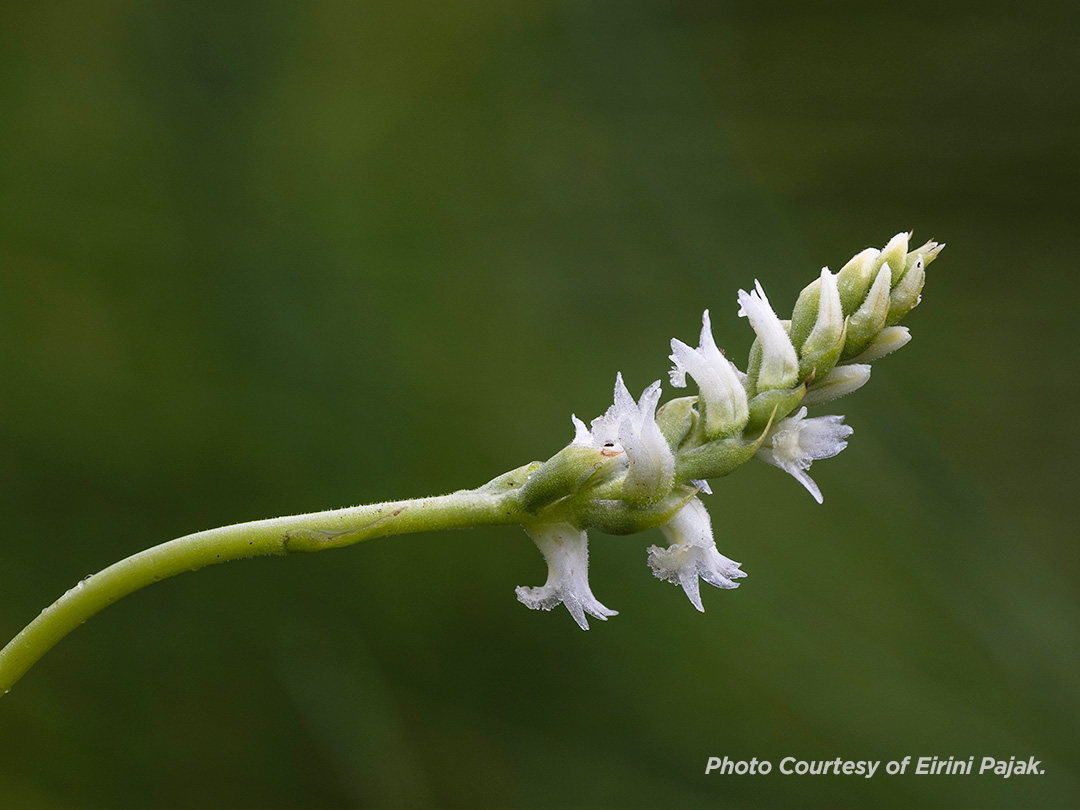
Earlier this year, the dogs were trained for two months by Lauralea Oliver, the owner of California-based K9inscentive, a professional ecology detection training center. She prepared the dogs for their search by having them sniff the leaves and roots of a close relatives to the endangered orchid. In August, the canines were taken to the site of the two existing orchid populations, both on privately owned ranches in southern Arizona, to test if they could sniff them out in the field. The dogs quickly showed they were capable by successfully locating the plants.
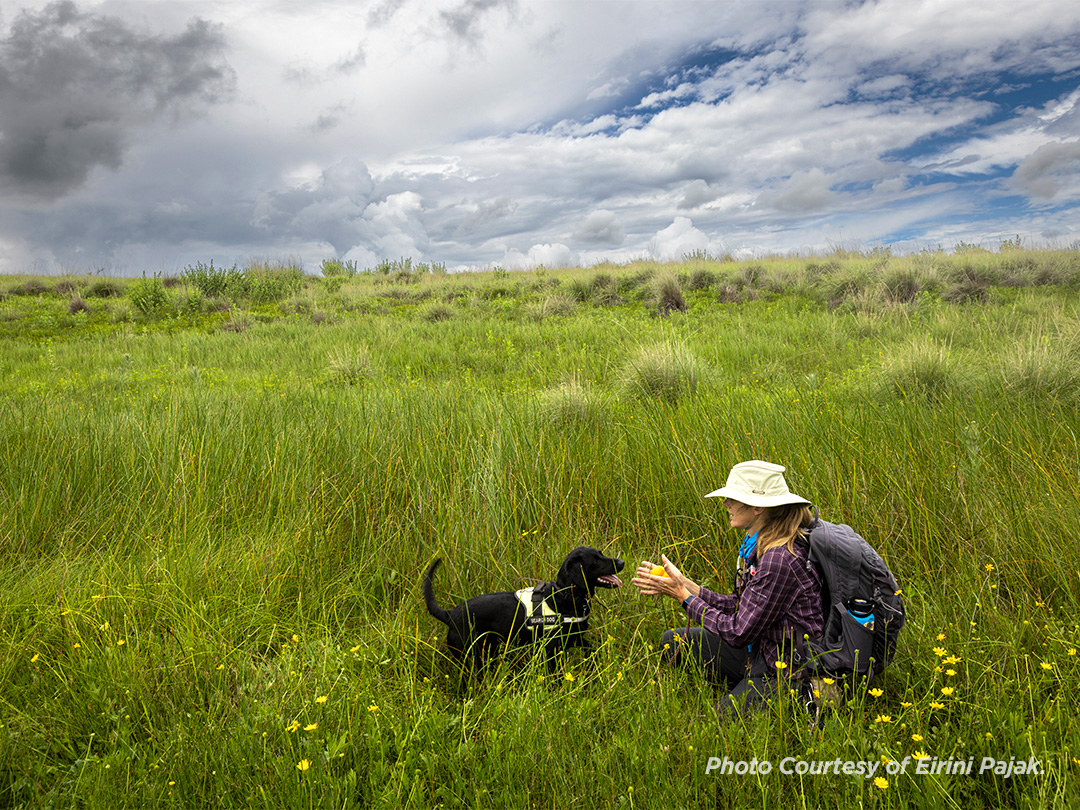
With humans and dogs working together, researchers will have a much greater chance of finding more of these orchids both within existing populations and those where they have not been seen in years.
Working alongside the canines are Garden Conservation and Collections Manager Steve Blackwell and research botanist and Herbarium Curator Andrew Salywon, who found the two populations that had not been documented in more than a decade. These sites are located on two privately-owned ranches in southern Arizona and without the support of the ranchers this project would not have been possible.
“In 2021, we were approached by an official at the U.S. Fish and Wildlife Service who proposed that we attempt to use dogs to find these endangered orchids. We instantly jumped at the opportunity and applied for funding from the agency to make it happen,” Blackwell says.
The research dogs are continuing their scent training in California with Lauralea to prepare for the next fieldwork project with the Garden next summer.
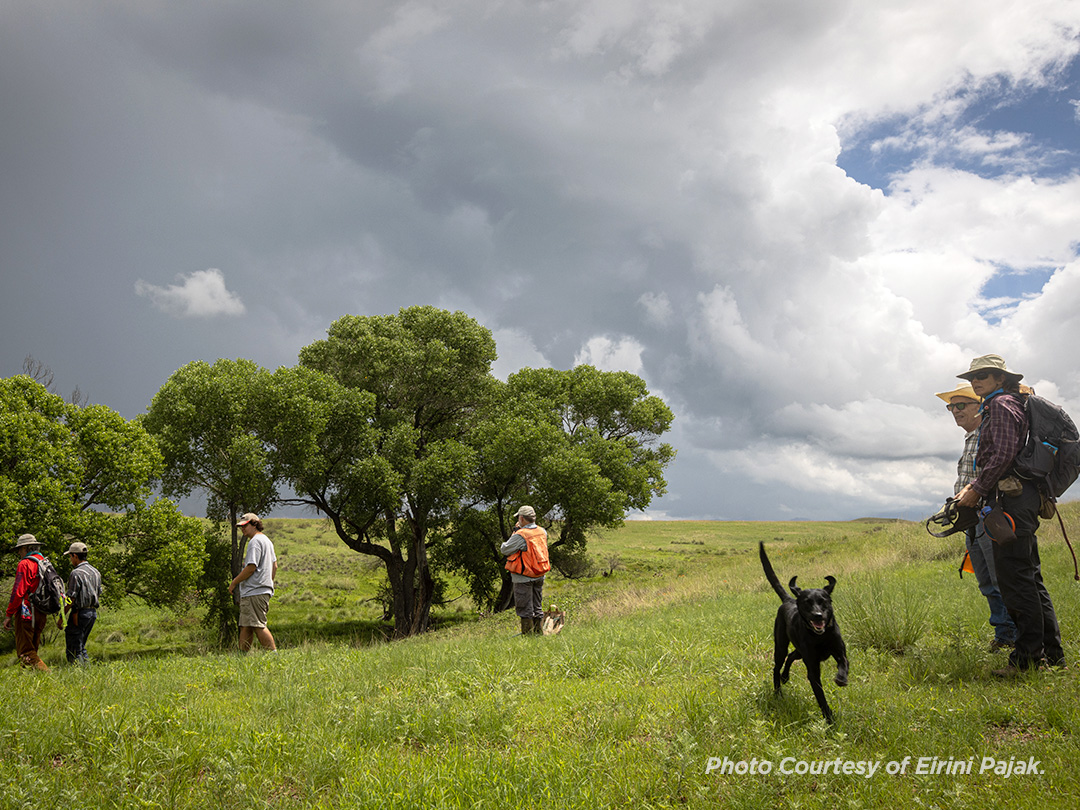
“Now that we’ve shown that the dogs can successfully find these plants in the wild, the next step will be for them to continue their training with the live plants in California. We will bring them back to Arizona next year with more experience where they can hopefully find even more plants at the existing sites and rediscover plants at the 3 sites where they have not been seen for over a decade,” Blackwell says.
The project was made possible by funding from the U.S. Fish and Wildlife Service and is in support of a Garden partnership with the Smithsonian’s Northern American Orchid Conservation Center, a coalition of organizations dedicated to conserving orchids. As part of this project, seeds and roots of the orchid are collected from the plants. Seeds will be primarily banked in the Garden’s seed bank while a portion of the seeds will be sent to the U. S. Department of Agriculture’s National Center for Genetic Resources Preservation in Ft. Collins, Colorado, as a backup collection. Some seeds will also be used in the Garden’s tissue culture lab in order to propagate hundreds more, so that they can be replanted in the wild. Other will be grown in the Garden’s greenhouses to harvest additional seeds and for educational purposes. Root samples were sent to collaborators at the Smithsonian Environmental Research Laboratory where researchers have already isolated, identified and cultured the fungus that is essential for the orchid’s life cycle.
Update on the Garden’s orchid conservation efforts:
- Garden researchers have reached a huge milestone now with more than 10,000 orchid plants growing in the seed lab. This is a huge accomplishment considering there are only about 250 plants remaining in the wild. Some of these plants will be used for reintroduction back in the wild and for producing more seed for banking here at the Garden.
- Garden researchers are also collaborating with the Smithsonian, Longwood Gardens, Fairchild Tropical Botanical Garden and Minnesota Landscape Arboretum to expand research into orchid conservation.
- The Garden has acquired a new grant with the Center for Plant Conservation and US Forest Service to collect seeds from two imperiled orchid species from southern Arizona, the Coleman’s coral root (Hexalectris colemanii) and the purple-spike coral root (Hexalectris warnockii).
Meet Circe and Muon! They are two specially-trained dogs used in ecological research who are helping Desert Botanical Garden, U.S. Fish and Wildlife and the Smithsonian find rare and endangered orchids growing in southern Arizona.

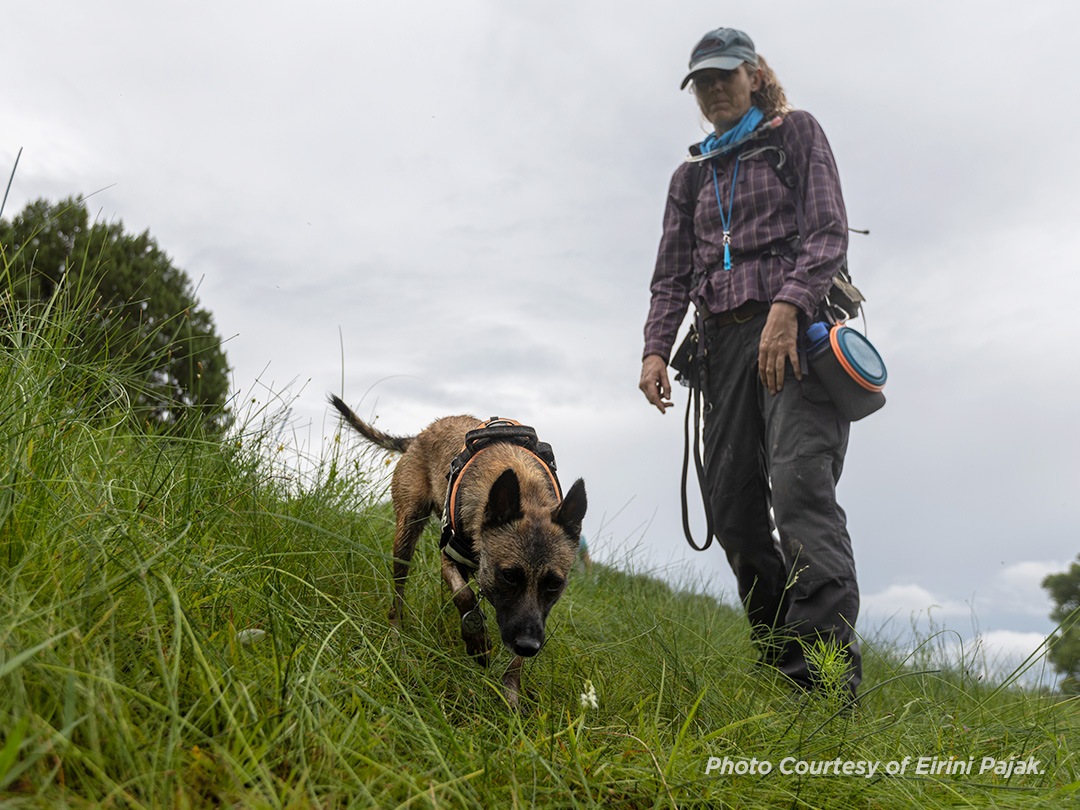
The research canines are on the hunt for the Canelo Hills ladies’-tresses orchid (Spiranthes delitescens), an endangered plant first described as a new species in 1990 and listed as endangered by 1997. The orchid grows in cienegas, a rare desert wetland native to the Southwest. Historically, it was known to grow in five localities in Arizona, but it has been in severe decline and has only been seen at two of these previously known sites since 2016.
It is nearly impossible for humans to look for these small cryptic plants due to their short flowering period and the dense vegetation in which they grow. However, dogs’ sense of smell makes them great at detecting them even when the orchids aren’t blooming

Earlier this year, the dogs were trained for two months by Lauralea Oliver, the owner of California-based K9inscenxtive, a professional ecology detection training center. She prepared the dogs for their search by having them sniff the leaves and roots of a close relatives to the endangered orchid. In August, the canines were taken to the site of the two existing orchid populations, both on privately owned ranches in southern Arizona, to test if they could sniff them out in the field. The dogs quickly showed they were capable by successfully locating the plants.
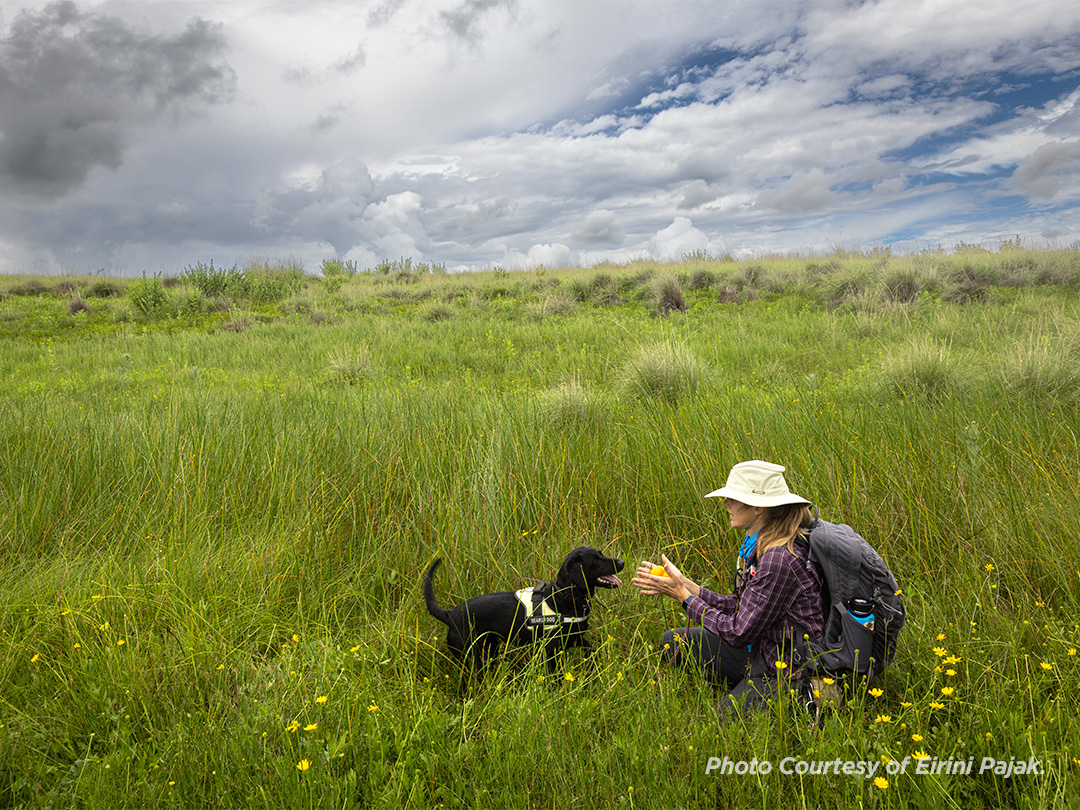
With humans and dogs working together, researchers will have a much greater chance of finding more of these orchids both within existing populations and those where they have not been seen in years.
Working alongside the canines are Garden Conservation and Collections Manager Steve Blackwell and research botanist and Herbarium Curator Andrew Salywon, who found the two populations that had not been documented in more than a decade. These sites are located on two privately-owned ranches in southern Arizona and without the support of the ranchers this project would not have been possible.
“In 2021, we were approached by an official at the U.S. Fish and Wildlife Service who proposed that we attempt to use dogs to find these endangered orchids. We instantly jumped at the opportunity and applied for funding from the agency to make it happen,” Blackwell says.
The research dogs are continuing their scent training in California with Lauralea to prepare for the next fieldwork project with the Garden next summer.

“Now that we’ve shown that the dogs can successfully find these plants in the wild, the next step will be for them to continue their training with the live plants in California. We will bring them back to Arizona next year with more experience where they can hopefully find even more plants at the existing sites and rediscover plants at the 3 sites where they have not been seen for over a decade,” Blackwell says.
The project was made possible by funding from the U.S. Fish and Wildlife Service and is in support of a Garden partnership with the Smithsonian’s Northern American Orchid Conservation Center, a coalition of organizations dedicated to conserving orchids. As part of this project, seeds and roots of the orchid are collected from the plants. Seeds will be primarily banked in the Garden’s seed bank while a portion of the seeds will be sent to the U. S. Department of Agriculture’s National Center for Genetic Resources Preservation in Ft. Collins, Colorado, as a backup collection. Some seeds will also be used in the Garden’s tissue culture lab in order to propagate hundreds more, so that they can be replanted in the wild. Other will be grown in the Garden’s greenhouses to harvest additional seeds and for educational purposes. Root samples were sent to collaborators at the Smithsonian Environmental Research Laboratory where researchers have already isolated, identified and cultured the fungus that is essential for the orchid’s life cycle.
